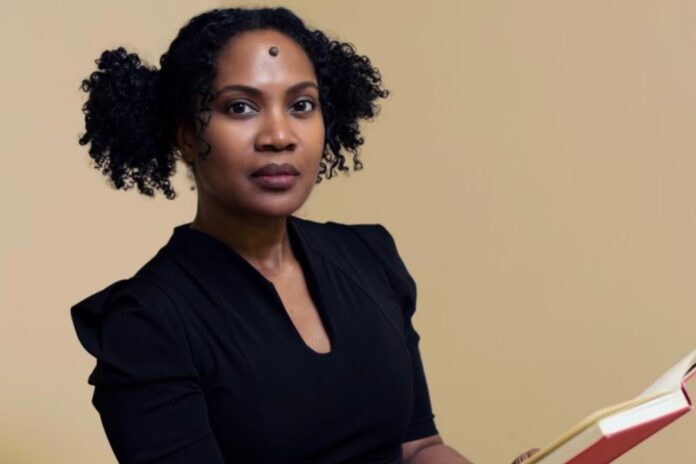1982
Me, then a bookish young teen read Alice Walker’s marvelous The Color Purple. In Celie’s letters, I discover a Black girl’s voice and subjectivity that resonates with an unspoken longing in my lonely, difficult girlhood life and a Shug Avery power that I’d found mostly in other books by Black women like Toni Morrison’s Sula and Mildred Taylor’s Roll of Thunder, Hear My Cry.
In Celie, I glimpse memory of my sweet Aunt Gracie’s gentle face marred by black eyes, and in Shug, my spiritual, strong mama’s resistance to being made small either by men or the church.
1985
On the verge of adulthood, several of my sisters and I attended The Color Purple movie event. We are beguiled by posters of Celie come to life in Whoopi Goldberg’s image, we hardly care about the swirling controversy—Black male critics of the novel. We can’t wait to see it, and we’re a little nervous too. This is Walker’s sacred text, The Color Purple, turned into a movie, and we really don’t know if Steven Spielberg is going to make a complete mess of it on screen or not.
Stephane Dunn
When we do see it, it’s not perfect, but it is an unforgettable experience. The performances are incredible. We whisper along with lines familiar to us from the book, anticipating what’s coming when Celie and Shug hit that purple flower field and when Celie’s justified rage against Mr.___ finally spills gloriously over as she takes a razor to his neck—I’d known a quiver of such rage kept suppressed way deep down against my own father—a way, way less monstrous guy, but a devastating alcoholic. The climactic dinner when Sofia’s spirit returns and Celie leaves with Shug declaring herself Black, free and “Here” will always stay with me.
A few years later in college, our fondness for reenacting scenes from the movie bonds me and my college roommate, future lifelong friend. She’s a Celie parody queen and me a dead-on Sofia imitator, “All my life, I’ve had to fight.” We have Color Purple-themed get-togethers and at least one such themed birthday party for her.
2005
Twenty years later post-the 1985 Color Purple movie, our spontaneous scene reenactments continue sending us into belly-felt girl giggles every time. We get excited when Oprah brings The Color Purple Broadway musical starring Fantasia Barrino. This season, she is on American Idol with Jennifer Hudson, the show becomes a temporary obsession. We cast our one and only American Idol vote that we’ll ever cast for Fantasia.
After she sings “Summertime” to us on her knees, on stage and on national TV as if her life depended on it, we vow to never watch American Idol again if she doesn’t win. She does. Even though children, work, bills and timing prevent us from making it to New York City and Broadway to see the musical, it reactivates our Color Purple love and from afar we admire, check out internet clips, and reenact.
2023
My former college roommate best friend and me are a bit befuddled but excited. The Color Purple is out again, and it’s in musical film form. Post a tumultuous, terrifying 2020, the riot on Capitol Hill and the recent overturning of Roe v. Wade, we’re in the throes of an era when The Color Purple novel isn’t a taken for granted.
People are asking why we have another Color Purple movie, and musical at that. We’re thinking the same, because the 1985 movie really is a classic we’d never forget, and we’re not sure this will work well on screen as a musical. Still, we’re in.
The Color Purple has been such a part of our adolescence and womanhood. Oprah is promoting the hell out of it like it’s the new Oprah Winfrey Show, and we’re still yearning for what we still don’t get enough of in major movies at Christmastime or any other time—Black girls and women, radiant, complex, larger than life in stories big and serious enough to hold their talents.
At the advanced screening with mostly an overwhelmingly Black women audience, The Color Purple movie musical takes us on a familiar yet very unique new journey. Like the first movie version, the cast is strong. But it’s the music and movement together, hip hop meets timeless African drum beats and dance, gospel and the blues. Halfway through, we’re nodding at each other and exhaling in praise in a call and response with our fellow viewers and Celie, Shug, and Sofia on screen.
I didn’t think there could be another memorable movie adaptation of The Color Purple, but there is and it speaks to my very grownup self. But more importantly, Alice Walker’s book is being remembered again in a fresh, contemporary form and at an urgent time, making it accessible to a new generation of Black girls now and those to come who will hopefully also discover the novel and fight for it too.
Stephane Dunn is a writer, filmmaker, and professor of film, African American film history and American popular culture at Morehouse College.
All views expressed in this article are the author’s own.
Do you have a unique experience or personal story to share? Email the My Turn team at [email protected]
Uncommon Knowledge
Newsweek is committed to challenging conventional wisdom and finding connections in the search for common ground.
Newsweek is committed to challenging conventional wisdom and finding connections in the search for common ground.


